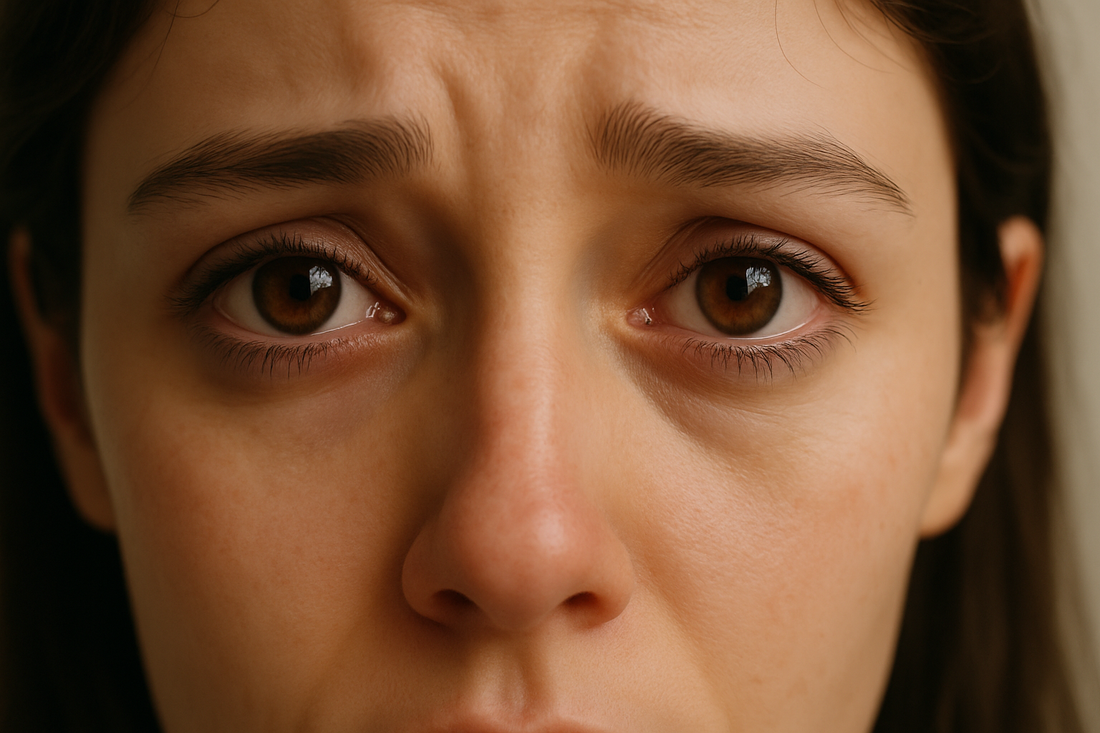
Blue light and your health: what your eyes are silently begging you to know
Share
Picture this: It's Thursday afternoon. You've been through twelve Zoom calls, answered roughly 7,000 emails, and your eyes feel like they've been rolled in sand, then polished with sandpaper. Sound familiar?
The culprit behind this digital misery has a name: blue light. And most of us are soaking in it for over 6 hours daily – that's a quarter of your life bathing your precious peepers in something they were never designed to handle.
The blue light spectrum: friend and foe
Not all blue light deserves a bad rap. This high-energy light exists on a spectrum:
- Beneficial blue-turquoise light (450nm-495 nm): Regulates your circadian rhythm, boosts alertness, and elevates mood. This is the good stuff your body actually needs
- Harmful blue-violet light (400-450 nm): The troublemaker that penetrates deep into your eye, contributing to digital eye strain and potentially long-term damage
- Natural blue light from the sun contains both types, but our ancestors weren't staring directly at the sun for six hours daily (those who tried didn't pass on their genes, for obvious reasons)
The problem? Our digital devices and LED lighting primarily blast the harmful spectrum directly into our eyes at close range, often until moments before you sleep (or try to).
What your optometrist wishes you knew
Your eyes are sending SOS signals you might be missing:
Immediate symptoms: That gritty feeling, headaches, blurred vision, and difficulty focusing after screen time aren't just annoyances – they're your visual system crying out for help.
Sleep disruption: Using screens before bed is like telling your brain it's midday. The blue-violet light tricks your pineal gland into suppressing melatonin production, leaving you staring at the ceiling at 2 am.
Long-term concerns: Emerging research from the Royal College of Ophthalmologists suggests consistent exposure to harmful blue light may accelerate macular degeneration and contribute to retinal damage – leading causes of vision impairment that can't be corrected with glasses or contact lenses.
According to a 2023 University College London study, people who spend more than 6 hours daily on digital devices show measurable changes to their tear film quality and corneal surface – changes previously seen only in adults over 50.
The digital age eye care protocol
You don't need to smash your laptop to save your sight. Try implementing this eye-friendly regimen:
- Follow the 20-20-20 rule: Every 20 minutes, look at something 20 feet away for 20 seconds. Set a reminder - your future self will thank you
- adjust your environment: Position screens at arm's length, slightly below eye level, with ambient lighting that reduces glare
- Night mode is non-negotiable: Enable blue light filters on all devices after sunset. Yes, your Instagram feed will look slightly jaundiced, but your sleep cycle will dramatically improve
- Consider your lighting: Replace harsh LED bulbs in your primary workspaces with warm-spectrum alternatives where possible
- Proper protection: Most importantly, consider quality blue light filtering eyewear specifically designed to target harmful 400-450 nm range without compromising your colour perception or style
Your eyes are the only set you'll ever have. Isn't it time they received the protection they deserve?
Sign up for our newsletter for more eye care tips!
